
Digital Marketing Blogs
"Let's Learn, Explore, and Connect to the World"
Instagram Community Building: Encouraging Interaction, Fostering a Loyal Following, and Using Features Like Polls and QA
- Cris Flores
- Digital Marketing (Digital Business)

Introduction
 In the digital landscape, Instagram has become a powerful platform for storytelling, brand building, and, most importantly, community engagement. The essence of Instagram has evolved from a simple photo-sharing app to a dynamic community-building tool that enables brands, influencers, and individuals to connect with audiences on a personal and interactive level. The significance of building a strong, engaged community on Instagram cannot be overstated. It’s about creating a space where followers don’t just passively scroll through content but actively engage, share, and become advocates for your brand or cause.
In the digital landscape, Instagram has become a powerful platform for storytelling, brand building, and, most importantly, community engagement. The essence of Instagram has evolved from a simple photo-sharing app to a dynamic community-building tool that enables brands, influencers, and individuals to connect with audiences on a personal and interactive level. The significance of building a strong, engaged community on Instagram cannot be overstated. It’s about creating a space where followers don’t just passively scroll through content but actively engage, share, and become advocates for your brand or cause.
The key to unlocking a vibrant community on Instagram lies in three core strategies: encouraging interaction, fostering a loyal following, and making the most of Instagram’s interactive tools. Crafting content that directly speaks to your audience’s interests, prompts them to share their views, and engages them in meaningful conversations is crucial. This strategy can transform passive viewers into active participants, creating a lively and engaged community.
 Fostering a loyal following is about consistency in your brand’s message, authenticity in your posts, getting to know your audience, and building a relationship.This loyalty turns followers into fans who eagerly anticipate your content and are willing to advocate on your behalf, extending your reach and influence on the platform.
Fostering a loyal following is about consistency in your brand’s message, authenticity in your posts, getting to know your audience, and building a relationship.This loyalty turns followers into fans who eagerly anticipate your content and are willing to advocate on your behalf, extending your reach and influence on the platform.
Lastly, the use of Instagram’s interactive features, such as polls and Q&A sessions, can significantly boost engagement. These tools not only provide fun and innovative ways to interact with your audience but also offer valuable insights into their preferences. This understanding can help you tailor your content to better suit their interests. By effectively utilizing these strategies, you can encourage active participation, foster a community of loyal followers, and ultimately build a more vibrant and engaging Instagram presence.
The Foundation of Community Building on Instagram
 Building a community on Instagram goes beyond mere numbers; it’s about creating a sense of belonging and connection among your followers. This foundation is built on understanding your audience, maintaining consistency and authenticity, and leveraging the power of visual storytelling. Let’s delve into these pillars that form the bedrock of a thriving Instagram community.
Building a community on Instagram goes beyond mere numbers; it’s about creating a sense of belonging and connection among your followers. This foundation is built on understanding your audience, maintaining consistency and authenticity, and leveraging the power of visual storytelling. Let’s delve into these pillars that form the bedrock of a thriving Instagram community.
Understanding Your Audience: Crafting Content That Resonates

The first step in community building is understanding who your audience is and what they care about. This insight goes beyond demographic data; it requires a deep dive into their interests, challenges, aspirations, and conversational styles. Use Instagram’s analytics tools to monitor engagement rates, see which types of content garner the most interaction, and note when your audience is most active. Surveys, direct messages, and comments provide a goldmine of information about your followers’ preferences.
Crafting content that resonates means speaking directly to your audience’s interests and needs. Whether educational posts, inspirational quotes, or entertaining videos, each piece should add value to their day and provoke thought or action. The more your audience connects with your content, the more they’ll like, comment, and share it, spreading it to even more people.
Consistency and Authenticity: The Keys to Engagement

Consistency in posting not only helps in keeping your audience engaged but also aids in building a predictable rhythm that followers can look forward to. It’s about finding the balance between being present and not overwhelming your followers with too much content. Establishing a content calendar can help in planning and maintaining this balance, ensuring that your posts align with your brand’s voice and message across all channels.
Authenticity, on the other hand, is what makes your brand relatable and trustworthy. In an era where audiences crave genuine connections, showing the human side of your brand—be it through behind-the-scenes glimpses, sharing failures alongside successes, or engaging in real conversations—can significantly deepen your relationship with your community. Authentic interactions foster trust and encourage your followers to share their personal stories, creating a robust two-way dialogue.
Visual Storytelling: Using Images and Videos to Connect

Since Instagram is all about pictures and videos, using them to tell stories is critical to building a solid community. A compelling image or video can convey emotion, share a moment, or tell a story in a way that words alone cannot. This visual narrative is powerful in creating memorable experiences that resonate with your audience on a personal level.
Leveraging the full range of Instagram’s visual features—from posts and stories to IGTV and Reels—allows you to share diverse content that captures your followers’ attention in different ways. High-quality visuals consistent with your brand’s aesthetic and message help create a cohesive, instantly recognizable look. Moreover, interactive elements like stickers in stories (e.g., polls, questions, and quizzes) can transform passive content consumption into an engaging experience, inviting your audience to partake in the narrative actively.
Building a community on Instagram is an art and a science. By understanding your audience, staying true to your brand through consistency and authenticity, and harnessing the power of visual storytelling, you lay the foundation for a vibrant and engaged community that supports your brand and contributes to its growth and evolution.
Encouraging Interaction Among Your Followers
 Interaction is the heartbeat of any thriving Instagram community. It transforms followers from silent spectators into active participants, creating a lively and engaging atmosphere. To cultivate this environment, you must focus on crafting engaging captions, responding to comments and messages, and utilizing stories and live videos. These strategies boost engagement and forge stronger connections with your audience.
Interaction is the heartbeat of any thriving Instagram community. It transforms followers from silent spectators into active participants, creating a lively and engaging atmosphere. To cultivate this environment, you must focus on crafting engaging captions, responding to comments and messages, and utilizing stories and live videos. These strategies boost engagement and forge stronger connections with your audience.
Crafting Engaging Captions: Questions, Calls-to-Action (CTAs)
 An engaging caption can be the difference between a passive scroll and a pause to interact. Captions should invite your audience to engage by asking thought-provoking questions or prompting them to share their experiences. This approach turns each post into a conversation starter, encouraging followers to comment and interact with one another. Similarly, incorporating clear calls-to-action (CTAs) such as “Double tap if you agree,” “Tag a friend who needs to see this,” or “Share your story in the comments” can significantly increase user interaction. These CTAs give followers a direct way to engage with your content, making them feel more connected to your community.
An engaging caption can be the difference between a passive scroll and a pause to interact. Captions should invite your audience to engage by asking thought-provoking questions or prompting them to share their experiences. This approach turns each post into a conversation starter, encouraging followers to comment and interact with one another. Similarly, incorporating clear calls-to-action (CTAs) such as “Double tap if you agree,” “Tag a friend who needs to see this,” or “Share your story in the comments” can significantly increase user interaction. These CTAs give followers a direct way to engage with your content, making them feel more connected to your community.
Responding to Comments and Messages: Building Relationships
 Engagement is a two-way street. Responding to comments and direct messages is crucial in building relationships with your followers. It shows that you value their input and are interested in what they have to say. Personalized responses, rather than generic replies, make followers feel seen and heard, fostering a deeper connection. This practice not only encourages them to comment more frequently but also builds a loyal community that feels connected to your brand on a personal level. Acknowledging positive feedback, addressing concerns, and answering questions promptly can turn casual followers into staunch supporters.
Engagement is a two-way street. Responding to comments and direct messages is crucial in building relationships with your followers. It shows that you value their input and are interested in what they have to say. Personalized responses, rather than generic replies, make followers feel seen and heard, fostering a deeper connection. This practice not only encourages them to comment more frequently but also builds a loyal community that feels connected to your brand on a personal level. Acknowledging positive feedback, addressing concerns, and answering questions promptly can turn casual followers into staunch supporters.
Using Stories and Live Videos: Real-time Engagement Strategies

Instagram Stories and Live Videos offer unique opportunities for real-time engagement. Stories, with features like polls, questions, and quizzes, invite followers to interact directly with your content. This interaction feels personal and immediate, increasing engagement and giving valuable insights into your audience’s preferences. Live videos take this a step further by allowing real-time communication. Hosting Q&A sessions, tutorials, or behind-the-scenes looks encourages live participation, making followers feel part of an exclusive event. Because stories and live videos vanish after a while, viewers must jump in and watch them before they’re gone.
Encouraging interaction among your followers is more than just increasing engagement metrics; it’s about building a vibrant, interactive community. If you write captions that grab attention, reply to comments and messages, and use features like stories and live videos, you can create a space where your followers feel like talking with you and build a stronger bond.
Fostering a Loyal Following
 Cultivating a loyal following on Instagram isn’t just about increasing your follower count; it’s about creating a community that is actively engaged and deeply connected to your brand. This loyalty is built over time through genuine interaction, recognition, and shared experiences. Strategies such as highlighting followers, creating exclusive content, and building a brand hashtag are essential in fostering a community where followers stay and become brand advocates.
Cultivating a loyal following on Instagram isn’t just about increasing your follower count; it’s about creating a community that is actively engaged and deeply connected to your brand. This loyalty is built over time through genuine interaction, recognition, and shared experiences. Strategies such as highlighting followers, creating exclusive content, and building a brand hashtag are essential in fostering a community where followers stay and become brand advocates.
Highlighting Followers: User-generated Content, Shoutouts
User-generated content (UGC) and shoutouts are potent tools for building loyalty. By featuring content created by your followers, whether it’s a product review, a testimonial, or a creative post related to your brand, you not only validate their effort but also encourage others to share similar content. This recognition can foster a strong sense of belonging and appreciation among your followers, making them feel valued and part of your brand’s story. Hosting challenges or contests that encourage UGC submission and then sharing these contributions further strengthens the community bond and elevates engagement.
Creating Exclusive Content: Behind-the-Scenes, Sneak Peeks

Offering exclusive content such as behind-the-scenes glimpses, sneak peeks of upcoming products, or insider information makes your followers feel special and valued. This type of content provides a look into the ‘human’ side of your brand, creating a deeper connection with your audience. It also builds anticipation and excitement, encouraging followers to stay engaged with your profile to not miss out on exclusive updates. Exclusive content can also be leveraged through Instagram Stories or closed groups, making it accessible only to your followers, which adds a layer of exclusivity and incentivizes people to follow and engage with your brand.
Building a Brand Hashtag: Encouraging and Curating Posts
 A brand-specific hashtag is a cornerstone for fostering a community feeling among your followers. It not only helps in curating content related to your brand but also encourages followers to contribute to the narrative. By promoting a hashtag, you invite your followers to use it in their posts, which can then be featured on your profile or stories. This not only amplifies their content but also strengthens their loyalty to your brand, as they see their contributions being valued and recognized. Additionally, a brand hashtag can serve as a community hub on Instagram, where followers can explore and interact with content from other community members, further enhancing the sense of belonging and loyalty.
A brand-specific hashtag is a cornerstone for fostering a community feeling among your followers. It not only helps in curating content related to your brand but also encourages followers to contribute to the narrative. By promoting a hashtag, you invite your followers to use it in their posts, which can then be featured on your profile or stories. This not only amplifies their content but also strengthens their loyalty to your brand, as they see their contributions being valued and recognized. Additionally, a brand hashtag can serve as a community hub on Instagram, where followers can explore and interact with content from other community members, further enhancing the sense of belonging and loyalty.
Fostering a loyal following on Instagram requires a strategic approach focused on engagement, recognition, and shared experiences. By highlighting followers through UGC and shoutouts, creating exclusive content, and building a brand hashtag, you can cultivate a community that is loyal and actively advocates for your brand.
Utilizing Interactive Features: Polls and Q&A

Instagram’s array of interactive features, such as polls and Q&A sessions, offers a unique opportunity to engage directly with your audience, making your community feel seen, heard, and valued. These features not only boost engagement but also provide valuable insights into your audience’s preferences and opinions. Let’s explore how to effectively use these tools and look at some successful case studies.
How to Use Polls: Gathering Feedback, Engaging in a Fun Way

Polls are a straightforward yet powerful tool for engaging your audience. Available in Instagram Stories, polls can be used to gather feedback on products, content preferences, or just about anything related to your brand. The key to successful polls is asking compelling questions that are relevant to your audience and easy to answer with a quick tap. This not only increases engagement but also makes your followers feel involved in decision-making processes. Furthermore, polls can be a fun way to engage your audience, using humor or topical questions to spark interaction and make your brand more relatable.
Leveraging Q&A Sessions: Direct Interaction, Answering Queries
 Q&A sessions on Instagram Stories offer a direct line of communication with your audience, allowing you to address their questions, concerns, or curiosities in real time. These sessions can be themed around specific topics, product launches, or general FAQs about your brand. The key to a successful Q&A session is to be responsive and authentic, providing valuable and honest answers that help build trust and deepen your relationship with your followers. Q&A sessions not only answer individual queries but also produce content that can be informative for your broader audience, addressing common questions or misconceptions.
Q&A sessions on Instagram Stories offer a direct line of communication with your audience, allowing you to address their questions, concerns, or curiosities in real time. These sessions can be themed around specific topics, product launches, or general FAQs about your brand. The key to a successful Q&A session is to be responsive and authentic, providing valuable and honest answers that help build trust and deepen your relationship with your followers. Q&A sessions not only answer individual queries but also produce content that can be informative for your broader audience, addressing common questions or misconceptions.
Case Studies: Examples of Successful Engagement Using These Features

One notable case study involves a beauty brand that used polls to let its followers decide on the next product shade to launch. This not only boosted engagement but also provided the brand with direct consumer insights, making their followers feel like an integral part of the product development process.
Another example is a travel blogger who regularly conducts Q&A sessions to share travel tips, recommendations, and personal experiences. These sessions have significantly increased engagement and follower loyalty, as the audience values the personalized advice and insights shared.
Both examples highlight how interactive features like polls and Q&A sessions can be leveraged to not only increase engagement but also foster a sense of community and inclusivity. By actively involving your audience in your content and decision-making processes, you can create a more engaged, informed, and loyal community on Instagram.
The journey of community building on Instagram is a multifaceted endeavor that extends beyond mere numbers to fostering genuine connections and engagements. As we’ve explored, the core strategies of understanding your audience, maintaining consistency and authenticity, leveraging visual storytelling, encouraging interaction, fostering loyalty, and utilizing interactive features are instrumental in cultivating a vibrant community. These strategies not only enhance engagement but also solidify the relationship between your brand and your followers, turning casual viewers into loyal advocates.
 The power of Instagram as a platform for community building cannot be underestimated. With its visual appeal, interactive capabilities, and vast reach, Instagram offers an unparalleled opportunity to connect with a global audience, share your brand’s story, and build a community that resonates with your values and vision. Whether it’s through engaging captions, user-generated content, exclusive insights, or direct interactions via polls and Q&A, each interaction on Instagram is a step towards building a stronger and more connected community.
The power of Instagram as a platform for community building cannot be underestimated. With its visual appeal, interactive capabilities, and vast reach, Instagram offers an unparalleled opportunity to connect with a global audience, share your brand’s story, and build a community that resonates with your values and vision. Whether it’s through engaging captions, user-generated content, exclusive insights, or direct interactions via polls and Q&A, each interaction on Instagram is a step towards building a stronger and more connected community.
Now is the perfect time to start implementing these strategies into your Instagram practice. Begin by taking small steps towards engaging more deeply with your followers, using the tools and features available to create meaningful interactions. Remember, community building is a gradual process that requires patience, persistence, and genuine effort.
We invite you to share your experiences and questions as you embark on this journey of community building on Instagram. Have you tried any of these strategies? What successes or challenges have you encountered? Your stories and insights are invaluable, and by sharing them, you contribute to a broader conversation that enriches all of us. Let’s continue to learn from each other and build thriving communities on Instagram together.
References
- How to Promote Your Aesthetic Study Blog on Instagram (7 Best Tips Revealed) – Social Pros. https://socialpros.co/aesthetic-study-blog/
- Use Social Media Tags for Marketing – Unlimited Marketing. https://unlimitedmarketing.net/use-social-media-tags-for-marketing/
Latest Blogs

Present Simple Tense 1
English Blogs “Let’s Learn, Explore, and Connect to the World” Present Simple Tense 1 I. Introduction to the Present Simple Tense in English Mastering the

Present Simple Tense 2
English Blogs “Let’s Learn, Explore, and Connect to the World” Present Simple Tense 2 II. Understanding the Present Simple Tense Definition and Structure At its
Reading comprehension quiz
Check out our books and more!
A Beginner's Guide to Video Editing: Be a Pro in Just 24 Hours
Discover your inner editing abilities with this complete guide made for beginners to master the art of video editing smoothly. ‘A Beginner’s Guide to Video Editing: Be a Pro in Just 24 Hours’ is your way to discover the secrets of professional-grade editing within a day.
Check out our Blogs!
Read our everyday blogs and expand your knowledge about English and Video Editing here in SEKAEL.


Learn through Basic English Grammar Blogs by widening your English vocabulary and learning English Grammar.
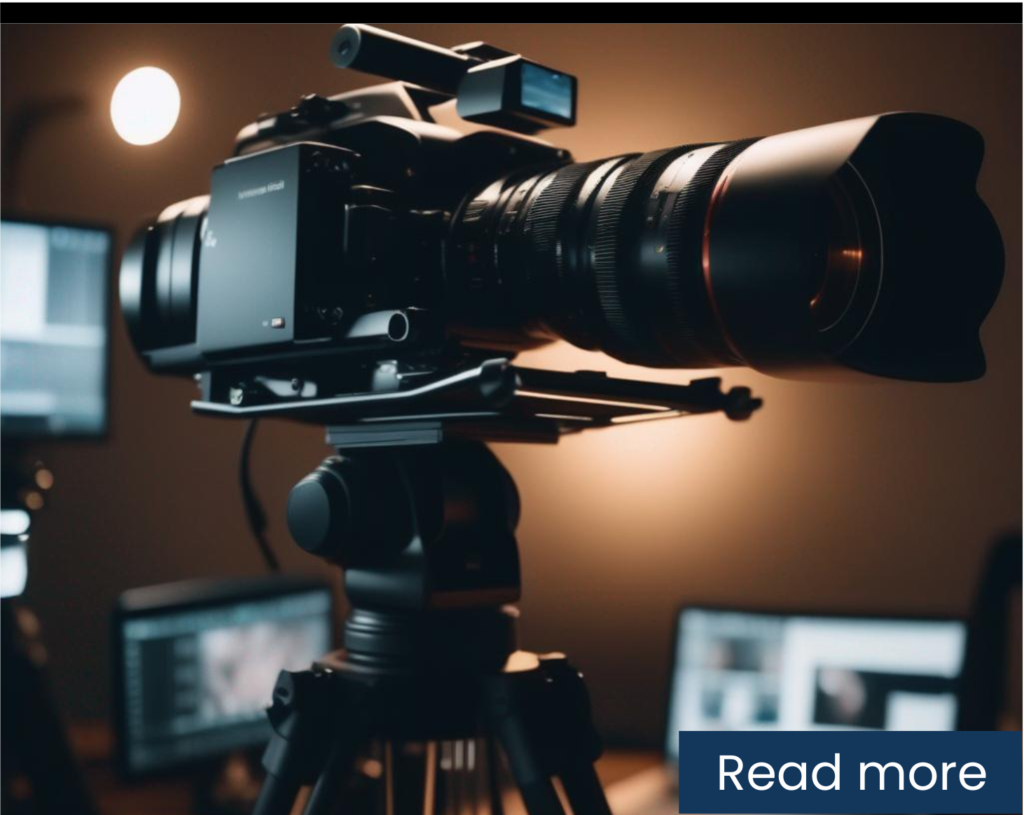




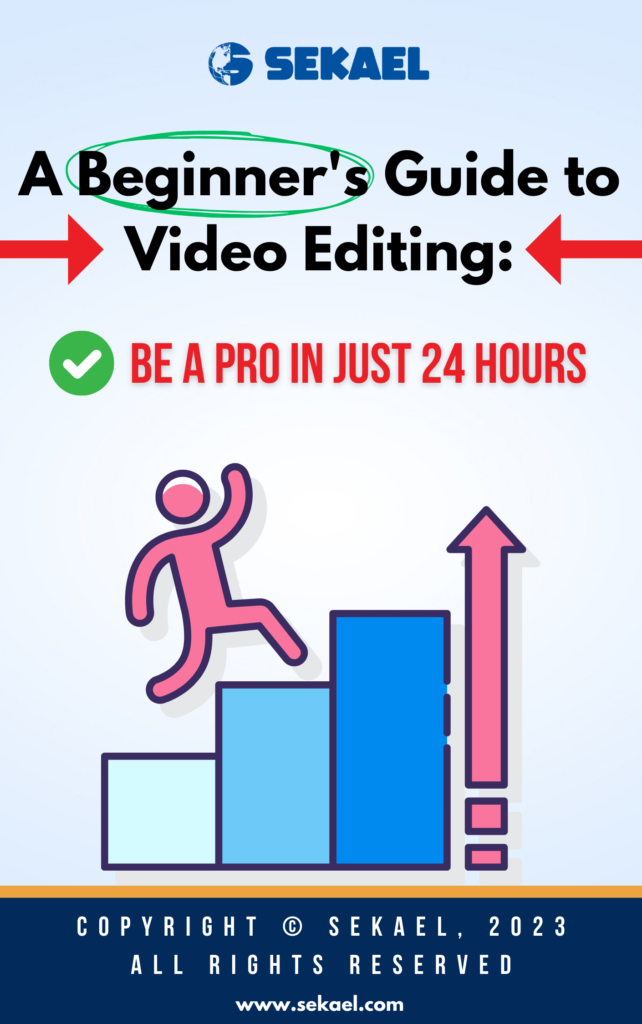


 Daily Conversations: Incorporate the Present Perfect Continuous into your daily conversations, focusing on actions that have been happening over a period of time.
Daily Conversations: Incorporate the Present Perfect Continuous into your daily conversations, focusing on actions that have been happening over a period of time. Writing Diaries: Write diary entries or journal posts using the tense to describe ongoing activities or changes in your life.
Writing Diaries: Write diary entries or journal posts using the tense to describe ongoing activities or changes in your life. Discussion Groups: Participate in English discussion groups or language exchange meetups where you can practice speaking about ongoing actions or experiences using this tense.
Discussion Groups: Participate in English discussion groups or language exchange meetups where you can practice speaking about ongoing actions or experiences using this tense. Debates and Discussions: Join debates or group discussions on topics like environmental changes, personal development, or current events, using the Present Perfect Continuous to express ongoing developments or effects.
Debates and Discussions: Join debates or group discussions on topics like environmental changes, personal development, or current events, using the Present Perfect Continuous to express ongoing developments or effects. Reflective Writing: Reflect on your personal experiences, hobbies, or professional skills that have been developing over time, using the Present Perfect Continuous to emphasize their progression.
Reflective Writing: Reflect on your personal experiences, hobbies, or professional skills that have been developing over time, using the Present Perfect Continuous to emphasize their progression. Creative Stories: Write short stories or narratives where characters are involved in long-term actions or experiences, employing the tense to add depth to the storyline.
Creative Stories: Write short stories or narratives where characters are involved in long-term actions or experiences, employing the tense to add depth to the storyline. Podcasts and Audiobooks: Listen to English-language podcasts or audiobooks, paying special attention to contexts where the Present Perfect Continuous is used.
Podcasts and Audiobooks: Listen to English-language podcasts or audiobooks, paying special attention to contexts where the Present Perfect Continuous is used. Movies and TV Shows: Watch movies and TV shows in English, focusing on dialogues that incorporate the Present Perfect Continuous, especially in scenes depicting ongoing actions or events.
Movies and TV Shows: Watch movies and TV shows in English, focusing on dialogues that incorporate the Present Perfect Continuous, especially in scenes depicting ongoing actions or events. Blogging: If you maintain a blog, write posts about your ongoing experiences or projects using the Present Perfect Continuous.
Blogging: If you maintain a blog, write posts about your ongoing experiences or projects using the Present Perfect Continuous. Story Development: Create stories focusing on characters with long-term goals or challenges, using the tense to convey the continuity of their experiences and actions.
Story Development: Create stories focusing on characters with long-term goals or challenges, using the tense to convey the continuity of their experiences and actions. Expanding your practice with the Present Perfect Continuous through a variety of activities and resources is key to mastering its use. Regular practice in speaking, writing, and comprehension will enhance your ability to effectively use this tense, enriching your overall communication skills in English.
Expanding your practice with the Present Perfect Continuous through a variety of activities and resources is key to mastering its use. Regular practice in speaking, writing, and comprehension will enhance your ability to effectively use this tense, enriching your overall communication skills in English.






 Emphasize Duration: Use this tense to emphasize the duration of an ongoing action, especially when the length of time is significant or relevant to the conversation.
Emphasize Duration: Use this tense to emphasize the duration of an ongoing action, especially when the length of time is significant or relevant to the conversation. Highlight Ongoing Nature: Choose this tense to highlight the ongoing nature of an action that started in the past and is still continuing.
Highlight Ongoing Nature: Choose this tense to highlight the ongoing nature of an action that started in the past and is still continuing.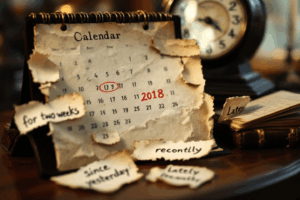 Combine with Time Expressions: Familiarize yourself with time expressions commonly used with this tense, like ‘for’, ‘since’, ‘lately’, and ‘recently’.
Combine with Time Expressions: Familiarize yourself with time expressions commonly used with this tense, like ‘for’, ‘since’, ‘lately’, and ‘recently’. Regular Practice: Integrate the Present Perfect Continuous into daily conversations, focusing on actions that are currently ongoing or were recently completed.
Regular Practice: Integrate the Present Perfect Continuous into daily conversations, focusing on actions that are currently ongoing or were recently completed. Writing Exercises: Write about your recent activities or ongoing projects using the Present Perfect Continuous to emphasize duration and continuity.
Writing Exercises: Write about your recent activities or ongoing projects using the Present Perfect Continuous to emphasize duration and continuity. Listening Comprehension: Listen for the use of the Present Perfect Continuous in podcasts, movies, and conversations to understand its application in various contexts.
Listening Comprehension: Listen for the use of the Present Perfect Continuous in podcasts, movies, and conversations to understand its application in various contexts. This tense is a dynamic and expressive tense that adds depth to your English communication, especially when discussing actions over time. By understanding its proper use, common mistakes, and through regular practice, your proficiency and comfort in using this tense will significantly improve, enriching your overall English language skills.
This tense is a dynamic and expressive tense that adds depth to your English communication, especially when discussing actions over time. By understanding its proper use, common mistakes, and through regular practice, your proficiency and comfort in using this tense will significantly improve, enriching your overall English language skills.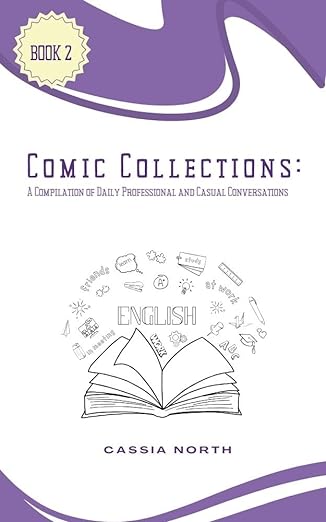


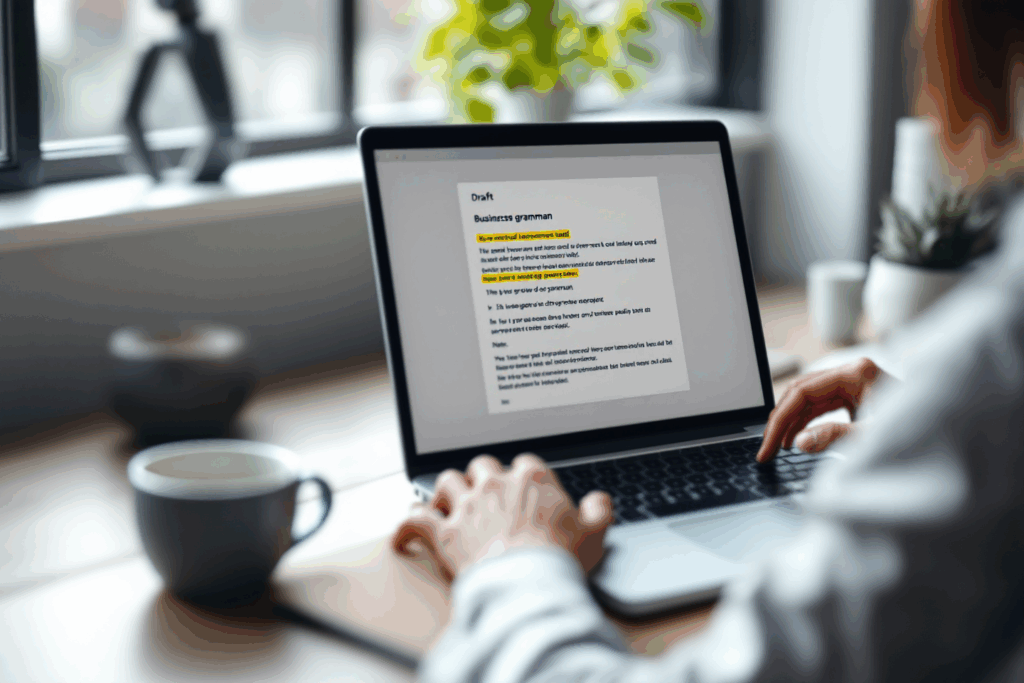








 Historical Inquiry: When discussing history or past events, formulating questions in this tense can help understand the duration and progression of historical situations, leading to deeper insights and more meaningful discussions.
Historical Inquiry: When discussing history or past events, formulating questions in this tense can help understand the duration and progression of historical situations, leading to deeper insights and more meaningful discussions. Reflective Writing: In journals or personal essays, using negative structures can help express what had not occurred or was not happening over a period leading up to a significant past moment, adding depth and introspection to your writing.
Reflective Writing: In journals or personal essays, using negative structures can help express what had not occurred or was not happening over a period leading up to a significant past moment, adding depth and introspection to your writing. By mastering the formation and use of questions and negatives in the Past Perfect Continuous Tense, you can enhance your ability to discuss, question, and negate aspects of past actions with greater clarity and precision. This skill is particularly valuable in complex narrative and analytical contexts, where understanding the nuances of past events is crucial. Embrace the power of this tense, and take your English communication skills to the next level.
By mastering the formation and use of questions and negatives in the Past Perfect Continuous Tense, you can enhance your ability to discuss, question, and negate aspects of past actions with greater clarity and precision. This skill is particularly valuable in complex narrative and analytical contexts, where understanding the nuances of past events is crucial. Embrace the power of this tense, and take your English communication skills to the next level.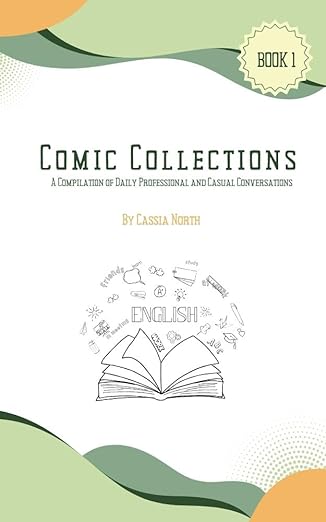







 By mastering these different applications of the Past Perfect Continuous Tense, you can add nuance and detail to your descriptions of past actions, particularly when emphasizing duration, cause and effect, and ongoing processes. This not only enhances your storytelling abilities but also improves the clarity and depth of your historical and analytical narratives. Embrace the power of this tense, and take your English language skills to new heights.
By mastering these different applications of the Past Perfect Continuous Tense, you can add nuance and detail to your descriptions of past actions, particularly when emphasizing duration, cause and effect, and ongoing processes. This not only enhances your storytelling abilities but also improves the clarity and depth of your historical and analytical narratives. Embrace the power of this tense, and take your English language skills to new heights.


 The Past Perfect Continuous Tense, an often-overlooked aspect of English grammar, is essential for expressing a nuanced view of the past. It combines the complexity of the past with the continuous aspect, offering a lens through which we can examine ongoing actions and situations leading up to a specific point in the past. By mastering this tense, you can add depth, clarity, and sophistication to your language skills, enabling you to communicate complex ideas about the past with ease.
The Past Perfect Continuous Tense, an often-overlooked aspect of English grammar, is essential for expressing a nuanced view of the past. It combines the complexity of the past with the continuous aspect, offering a lens through which we can examine ongoing actions and situations leading up to a specific point in the past. By mastering this tense, you can add depth, clarity, and sophistication to your language skills, enabling you to communicate complex ideas about the past with ease.


 Understanding the temporal aspect of the Past Perfect Continuous is key. It places emphasis on the process or duration of past actions rather than their completion. This aspect makes it distinct from the Past Perfect Tense, which focuses more on the completion of past actions before another past moment.
Understanding the temporal aspect of the Past Perfect Continuous is key. It places emphasis on the process or duration of past actions rather than their completion. This aspect makes it distinct from the Past Perfect Tense, which focuses more on the completion of past actions before another past moment. When using the Past Perfect Continuous, it’s important to consider whether the focus is on the action’s duration leading up to another event or its completion. If the emphasis is on the outcome or completion, the Past Perfect Tense might be more appropriate. However, if the focus is on the ongoing nature of the past action, the Past Perfect Continuous is the better choice.
When using the Past Perfect Continuous, it’s important to consider whether the focus is on the action’s duration leading up to another event or its completion. If the emphasis is on the outcome or completion, the Past Perfect Tense might be more appropriate. However, if the focus is on the ongoing nature of the past action, the Past Perfect Continuous is the better choice.





 The Past Perfect Continuous serves to emphasize the process or duration leading up to a particular past moment, often shedding light on the causes or backgrounds of past states or events. By using this tense, you can provide your audience with a deeper understanding of the context and circumstances surrounding past actions, enabling them to appreciate the full significance of the events being described.
The Past Perfect Continuous serves to emphasize the process or duration leading up to a particular past moment, often shedding light on the causes or backgrounds of past states or events. By using this tense, you can provide your audience with a deeper understanding of the context and circumstances surrounding past actions, enabling them to appreciate the full significance of the events being described. Mastering the Past Perfect Continuous Tense not only enhances your grammatical proficiency but also expands your ability to express complex ideas and relationships in the past. It enables you to create rich, detailed narratives that capture the nuances of time, cause, and effect, making your writing or speech more compelling and engaging.
Mastering the Past Perfect Continuous Tense not only enhances your grammatical proficiency but also expands your ability to express complex ideas and relationships in the past. It enables you to create rich, detailed narratives that capture the nuances of time, cause, and effect, making your writing or speech more compelling and engaging. From narrative details to hypothetical reflections, mastering the Past Perfect Continuous Tense enables a richer, more detailed expression of past activities and their implications. You will learn how to effectively use this tense to describe interrupted actions, parallel past events, and the duration of past actions leading up to another event.
From narrative details to hypothetical reflections, mastering the Past Perfect Continuous Tense enables a richer, more detailed expression of past activities and their implications. You will learn how to effectively use this tense to describe interrupted actions, parallel past events, and the duration of past actions leading up to another event. Join us as we unfold the layers of the Past Perfect Continuous, and discover how this tense can help you become a more effective communicator and storyteller in English. Get ready to take your English language skills to the next level and unlock the full potential of your storytelling abilities.
Join us as we unfold the layers of the Past Perfect Continuous, and discover how this tense can help you become a more effective communicator and storyteller in English. Get ready to take your English language skills to the next level and unlock the full potential of your storytelling abilities.










 Mastering the Past Perfect Tense not only improves your grammatical precision but also enhances your storytelling and analytical skills. However, proper usage requires awareness of common pitfalls and the application of practical strategies. This section will help you navigate the complexities of the Past Perfect, ensuring clear and effective communication.
Mastering the Past Perfect Tense not only improves your grammatical precision but also enhances your storytelling and analytical skills. However, proper usage requires awareness of common pitfalls and the application of practical strategies. This section will help you navigate the complexities of the Past Perfect, ensuring clear and effective communication.


 By adhering to these tips and being mindful of common mistakes, you can effectively integrate the Past Perfect Tense into your English usage. This will enable you to convey time relationships between past events more clearly and enhance your overall communication skills.
By adhering to these tips and being mindful of common mistakes, you can effectively integrate the Past Perfect Tense into your English usage. This will enable you to convey time relationships between past events more clearly and enhance your overall communication skills.



 Asking About Past Experiences: Use questions in the Past Perfect to inquire about experiences up to a certain point in the past. This can be particularly useful in interviews or historical discussions.
Asking About Past Experiences: Use questions in the Past Perfect to inquire about experiences up to a certain point in the past. This can be particularly useful in interviews or historical discussions. Clarifying Sequences of Events:
Clarifying Sequences of Events: Expressing Uncertainty or Denial:
Expressing Uncertainty or Denial: